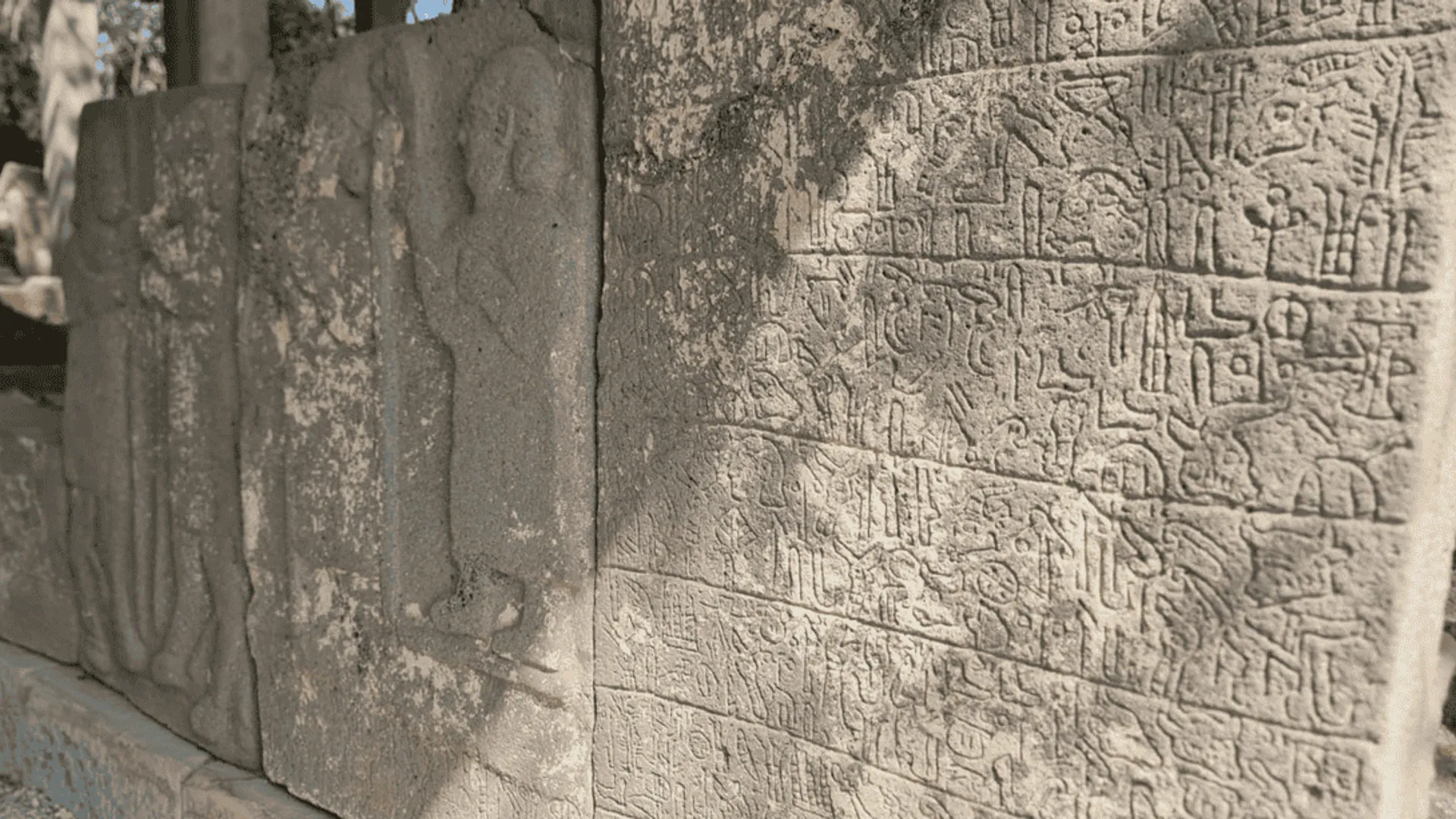KARATEPE-ASLANTAS INSCRIPTIONS ADDED TO UNESCO'S MEMORY OF THE WORLD INTERNATIONAL REGISTER

The Karatepe Aslantaş Inscriptions in Kadirli district of Osmaniye have been registered in the UNESCO Memory of the World International Register.
Positive results were obtained in the studies carried out on the inscriptions in which Anatolian hieroglyphs and Phoenician languages were used together. The 2,700-year-old inscriptions at the Kadirli Karatepe Aslantaş Open Air Museum were registered in the UNESCO Memory of the World International Register under the name of Karatepe Inscriptions. The bilingual 'Karatepe Inscriptions' were registered as a documentary heritage from Turkey to the UNESCO Memory of the World International Register with the joint work carried out by the Provincial Directorate of Culture and Tourism, Osmaniye Korkut Ata University (OKÜ) and the Global Strategic Research Association (KÜRSAD).
Osmaniye Governor Erdinç Yılmaz and Provincial Culture Director Burhan Torun went to the archaeological site and made investigations. Speaking here, Yılmaz said, "As a result of the joint studies carried out by our Provincial Directorate of Culture and Tourism, OKÜ and the Global Strategic Research Association (KÜRSAD) regarding the inscriptions in which Anatolian hieroglyphs and Phoenician languages are used together in the Karatepe Aslantaş Open Air Museum, The Karatepe-Aslantaş Inscriptions were registered as a heritage from Turkey to the UNESCO Memory of the World International Register under the name 'Karatepe Inscriptions' with the decision taken at the 221st session of the UNESCO Executive Board held in Paris on May 3."
'THE EDGE CASTLE OF ADANAVA'
Giving information about Kadirli Karatepe Aslantaş Open Air Museum, Yılmaz continued as follows:
"It consists of two large city gate structures, a road axis and the spaces located on both sides of it, which were revealed by the excavations that started in 1947. Karatepe-Aslantaş Archaeological Site is a unique example of the defense architecture of the period with its magnificent wall and city gates as an edge castle of Adanava, one of the city states established in the Anatolian geography during the Late Hittite period. Since the castle settlement was abandoned relatively shortly after it was established, it has preserved its architectural identity, which is based on its original design, very well as a single-layered archaeological site. In this context, it is an original example that exhibits the advanced architecture and art understanding of its period with its monumental and artistic gate entrances as well as Late Hittite castle planning."
PROTECTED IN 1950
Emphasizing that another feature that makes Karatepe-Aslantaş stand out in the world of archeology is the bilingual inscriptions designed as Phoenician and Luvian, Yılmaz said, "The inscriptions, which are the longest bilingual texts in these languages, written in both the Phoenician alphabet and Luwian hieroglyphs on the basalt steles and reliefs found on both gates, played an important role in the deciphering of the Luwian hieroglyph. Another feature that makes Karatepe-Aslantaş unique and important is that, with the efforts of Halet Çambel, the head of the excavation and one of Turkey's leading archaeologists, the historical national park was declared together with the sculpture and relief conservation, protection roof application and the natural forest surrounding the area as early as the 1950s, ensuring the preservation of the archaeological site with all its artistic values and the maintenance of its cultural landscape. These early and successful applications also highlight the area in terms of exhibiting one of the first examples of on-site conservation and site management in archaeological sites," he said.












